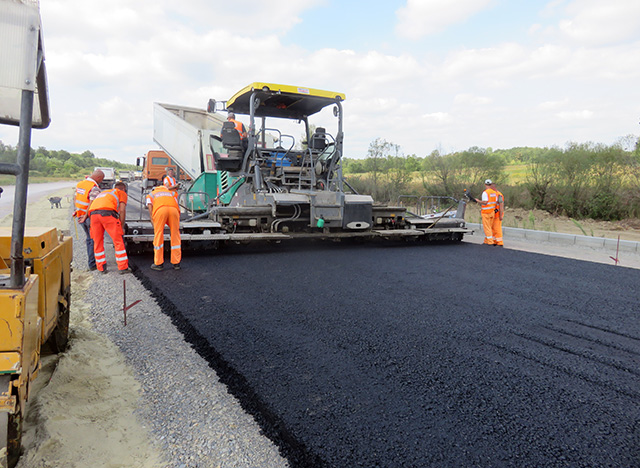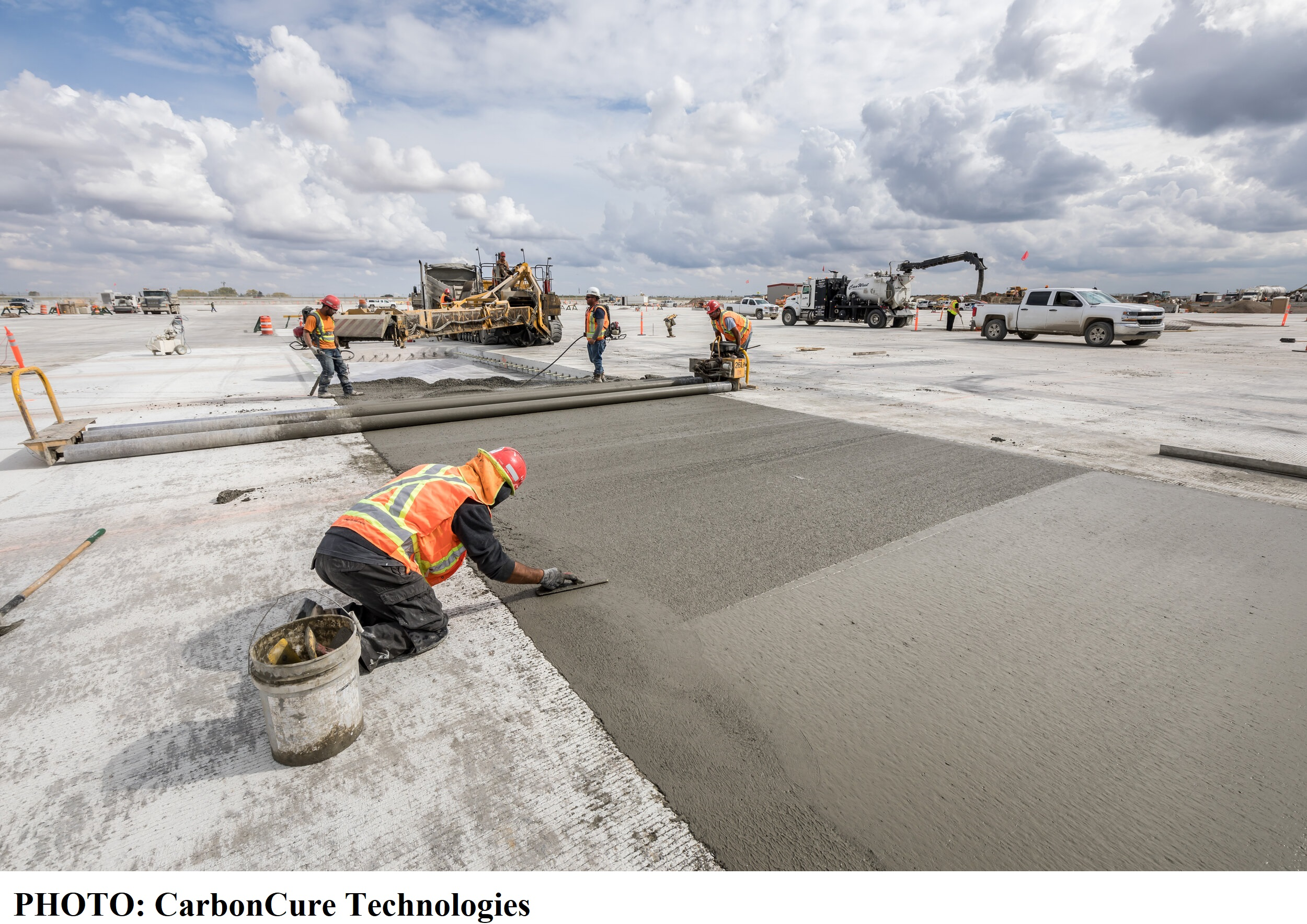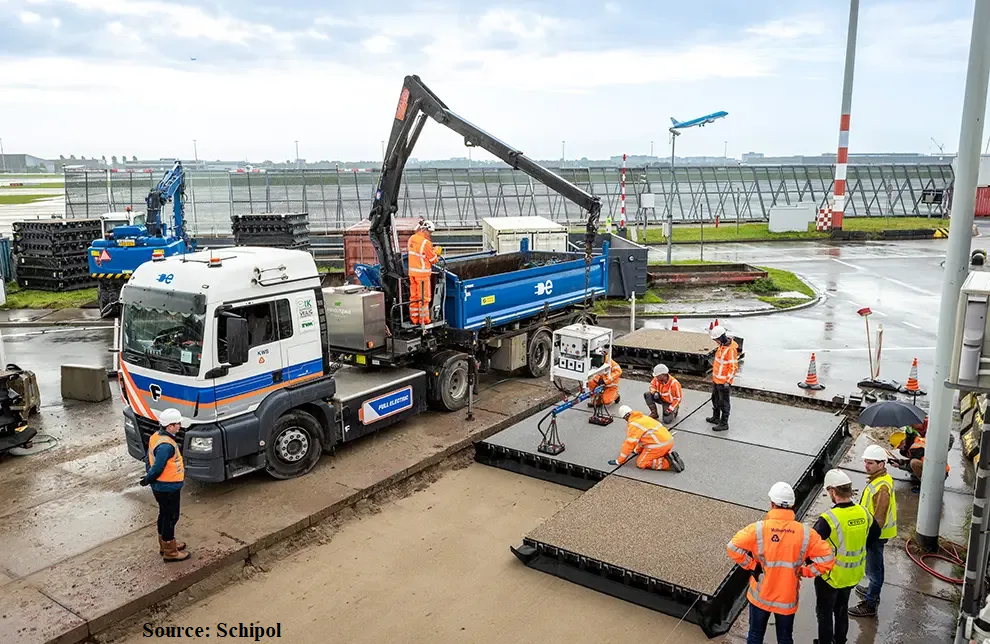When you think of road construction, you probably don’t picture misty mountainsides and piles of recycled concrete. But that’s what happens with sustainable road construction.
Environmental sustainability is critical. Without it, all of the other advantages of adopting sustainable materials to create roads would be lost. Sustainable highways have become an integral aspect of institutional infrastructure design in order to minimize petroleum usage and boost cost-effectiveness.
The main difference between traditional road construction and sustainable road construction is that instead of using virgin materials like asphalt or concrete, recycled materials are used in its place. This reduces costs significantly because fewer resources need to be extracted from the earth, which also reduces carbon emissions produced by mining operations.
How Can We Make Roads Sustainable?
According to a recent Federal Highway Administration estimate, the United States’ transportation infrastructure is underfunded. The Federal Highway Administration report estimates that every dollar spent on road construction generates $4 in economic growth, so it’s easy to see why this issue is so important.
Sustainable construction is critical in a world where carbon dioxide emissions and rising sea levels are a significant concern. The road construction sector is one of the most critical contributors to carbon emissions and global warming, but what if we could reduce these impacts?
There are different ways that we can make roads sustainable:
Using Lower Carbon Materials
Transportation is a significant contributor to carbon emissions, and roadways are the second largest source of carbon dioxide emissions in the U.S., according to the Environmental Protection Agency (EPA).
Roads are made from asphalt, which is made from petroleum. Asphalt production can also release large amounts of greenhouse gases into the atmosphere.

It’s estimated that 20% of all CO2 emissions from road transport come from the weight of vehicles and infrastructure alone. That’s why bamboo or rubber tyres are so appealing – they reduce weight dramatically and make cars more fuel efficient while being more resilient to wear and tear.
The EPA has set a goal of reducing greenhouse gas emissions by 80% below 2005 levels by 2030. The agency has also set specific goals for transportation fuels and vehicle technologies that reduce greenhouse gas emissions.
The most effective way to reduce greenhouse gas emissions from asphalt is to use lower carbon materials in their places, such as recycled plastic or wood waste. These materials are lighter than concrete and more durable in the long run.
The main problem with existing asphalt-based roads is that they’re so heavy. If you’ve ever driven over one of the many potholes in Britain’s crumbling road network, you’ll know how much damage this can cause.
Another advantage of using these materials is that they’re far more environmentally friendly than concrete. Concrete production requires a lot of energy and produces a lot of carbon dioxide. The manufacturing process also leaves behind toxic waste that has to be disposed of properly — which isn’t always possible in developing nations with limited resources.
Lower carbon concretes
Concrete is one of the most widely used materials in road construction. It accounts for approximately 35% of all concrete produced worldwide. It has high compressive strength and can withstand harsh weather conditions such as freezing temperatures, extreme heat or humidity levels. Concrete also provides good riding characteristics on highways while providing support for heavy loads such as trucks carrying freight or vehicles transporting passengers.
However, concrete is highly energy intensive to produce with significant carbon dioxide emissions associated with it. Cement production is responsible for around 5% of global CO2 emissions. To reduce these emissions, we need to find ways of reducing cement use and substituting some of the cement with fly ash and slag.
Fly ash is produced during coal-fired power generation, while slag is a by-product from metal production processes such as steel making or aluminium smelting. Therefore using low carbon alternatives such as fly ash or slag in place of Portland cement could significantly reduce greenhouse gas emissions from concrete production.
Warm mix asphalts
Warm mix asphalts (WMAs) are an innovative way to reduce CO2 emissions from road construction. They typically contain less aggregate material, which reduces paving costs and increases their environmental impact compared to traditional cold mixes. Warm mix asphalt also produces fewer greenhouse gas emissions and significantly reduces noise pollution during construction.
WMAs use less bitumen than conventional asphalt mixes, reducing both the amount of energy required for production and the carbon footprint associated with asphalt production and application. The reduced amount of bitumen in WMAs also makes them more flexible, meaning they can be used on roads with high traffic density or extreme weather conditions.
Energy- Saving Asphalt
Asphalt is the most common road surfacing material in the world, used in 80% of all roads. It’s also one of the most environmentally damaging materials we use, thanks to its heavy carbon footprint.
The average asphalt road has a life expectancy of only about 20 years, after which it must be removed and replaced with new asphalt. When this happens, up to 65% of the original asphalt material ends up in landfills or incinerators.
If we could make existing asphalt last longer, we would have more sustainable roads. Material sustainability is important because it helps reduce our carbon footprint and can be an effective way to help slow climate change.
The Rice team has developed an asphalt mixture that uses less cement, which reduces carbon emissions during production by up to 50%. They also added silica fume, a waste product from steel mills that replaces some cement and increases durability by strengthening the mixture’s binding properties.
According to their calculations, this combination reduces carbon emissions associated with road resurfacing by 75%. This means that even if we continue to pave over our existing roads every 20 years and never recycle any pavement material (which is unlikely), using this new type of asphalt could reduce overall carbon emissions from road construction by nearly 30%.
Sustainable Drainage Systems
One of the best ways to make roads sustainable is to use sustainable drainage systems. These sustainable solutions have several advantages over conventional ones, such as:
They’re more energy efficient. Energy is used to pump water away from roads and pavements, but it can be used to clean drains.
They require less maintenance. Conventional drains need regular cleaning and maintenance work because they fill up with debris over time. Sustainable drainage systems don’t require this work because they’re designed to filter out debris before it can enter the primary drainage system or cause blockages in the pipes.
They’re better for the environment because they reduce stormwater pollution and flood risk by slowing down run-off and allowing it to soak into the ground instead of rushing off into rivers or onto other people’s properties.
Quality Control
Roads must be designed, built, and maintained according to standards that ensure they provide safe, reliable transportation. Many roads are being built with substandard materials or are poorly constructed. If a road isn’t built right, it won’t last long; maintenance costs go up, so taxpayers pay more for fewer benefits.
Improving quality control for road construction can include:
- Using better materials such as asphalt with high-quality stone aggregate rather than sand or gravel.
- Using more robust steel reinforcement bars.
- Using hot mix asphalt instead of cold mix asphalt when possible.
- Use concrete pavement instead of asphalt pavement, and parking vehicles at least 1 meter from the curb so that water can drain away from the surface during rainstorms (instead of pooling up on top).
Related: Procurement in Construction
What are Sustainable Roads Made of?
A sustainable road is built to last and stay in good condition for a long time. To make a sustainable road, you need materials that come from the earth and are renewable, such as sand, stone, gravel, and clay. You can also use materials from plants or animals, such as woodchips or bark chips.
You can make your sustainable road by recycling materials you find around your house or school. For example, you can use old tyres as raised beds for growing plants or flowers. Construction agencies should adopt a sustainable approach that have less environmental impact when constructing new roads.
Sustainable road construction is the use of materials that reduce the impact on the environment and the natural resources required to make them. It is a more sustainable alternative to traditional road construction, which uses materials such as asphalt, concrete, and bitumen.

Sustainable road construction involves a combination of different types of materials, including:
- Natural materials like rocks, soil, and sand; are often used in place of asphalt or concrete.
- Bioswales are strips of grass planted along roadsides that filter rainwater before it reaches storm drains. This helps keep pollutants out of rivers and oceans.
- Asphalt is made from recycled concrete aggregate, which can be produced from waste tyres or cooking oil. Some countries already use these materials for local roads or parking areas.
- The bituminous layer is made from recycled rubber tyres, which reduces its environmental impact by up to 80%.
Use Permeable Pavers
Permeable pavers are permeable paving stones that allow water to pass through them. They are made from materials like concrete and stone, so they have a long lifespan and are very durable.
The main advantage of using permeable pavers is that they help reduce runoff and pollution by allowing rainwater to be absorbed into the ground instead of collecting in gutters and storm drains. This reduces the need for chemicals and pesticides in fertilizing lawns, as well as reducing road maintenance costs.
Permeable pavers can be used on driveways, sidewalks, patios and even around pools or ponds. They come in a wide range of colors, shapes and sizes to fit any landscaping design. Permeable pavers are often used in conjunction with other types of paving materials such as brick or stone walkways or patios to create an aesthetic appeal while still allowing water to drain freely through the surface into the soil below.
What is a Sustainable Highway?
A sustainable highway is a highway that is designed, constructed, and maintained with a minimal negative impact on the environment, including people’s health and safety, wildlife habitat, and other natural resources. These highways’ goal is to reduce maintenance costs while minimizing environmental impact.
Highway construction often involves road widening or expansion, which can cause habitat destruction and cause flooding. Using asphalt in road construction leads to air pollution, the heat island effect, and greenhouse gas emissions.
The highway design focuses on reducing road construction’s environmental impacts by using durable, lightweight, and recyclable materials. Materials such as steel-reinforced concrete offer durability without adding significant weight to the structure.
Sustainable highways must also be designed for their entire lifecycle, from planning through construction, maintenance, and eventual decommissioning.
A sustainable highway has been designed and constructed to minimize negative impacts on the environment. These impacts include noise, water pollution, energy consumption, and waste generation. You can sustainable practices this through many different methods, such as:
- Using materials that are less harmful to the environment during production (e.g., using recycled materials)
- Using materials that are less harmful to the environment when they breakdown (e.g., using recycled asphalt)
- Reducing the amount of materials used in construction (e.g., using fewer concrete barriers)
What is the Most Sustainable Method of Construction?
The most sustainable method of construction is to use sustainable materials, such as recycled materials, low-carbon-emitting products, and renewable energy.

Recycling materials is a great way to reduce the amount of waste going into landfills and reduce the need for new resources. Recycling also reduces the amount of energy needed to produce new materials. This is especially important when it comes to asphalt. Asphalt is made from crude oil and natural gas, nonrenewable resources.
The use of recycled asphalt pavement (RAP) in road construction has become more common over the last few years. RAP is produced by grinding up old asphalt pavement and using it as a base material for new pavement. In some cases, you may also add crushed glass or plastic bottles.
Using recycled asphalt pavement saves money because less virgin material needs to be purchased. It also reduces emissions from vehicles traveling on roads built with RAP because less carbon dioxide is released when producing the new asphalt than when making virgin asphalt mixtures.
Related: Improve your Productivity in Construction with the following tips
Conclusion
Roadway construction is one of the most significant contributors to total greenhouse gas emissions. The sustainable road construction requires action plan with an ambitious innovation agenda to transform the road systems into truly sustainable modes of transport, reduce the disruption in the area, and are more environmentally friendly.
To create the product plan you should use EpiProdux development roadmap to bring all experts and managers behind the plan. Additionally you can manage the road construction features with EpiProdux so each component of your future road will be unique and will produce max value for you. Develop sustainable road construction product with EpiProdux.
Try it for free today


